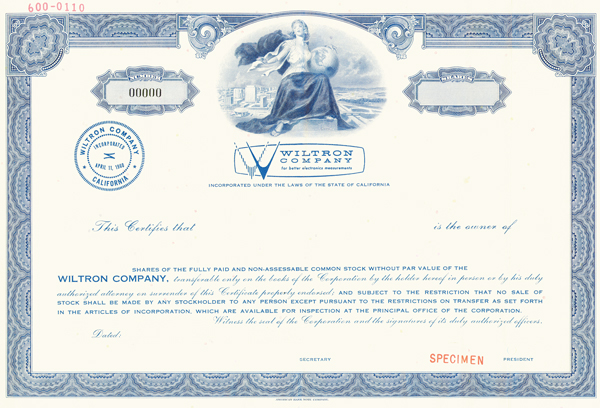WILTRON’s Model 360 was regarded by customers as the most sophisticated instrument that had ever been available to microwave engineers, but before they invested $100,000 to $200,000 for an instrument of this kind, the key factor in the customers mind was going to be its accuracy. My overriding concern was that WILTRON had to have state of the art accuracy and resolution. If there had been any shortcomings in either of these areas, we would have been chopped to pieces by Hewlett-Packard’s large sales force. Their salespeople in this specialized microwave area outnumbered ours by 20 to 1.
My lead designer had the idea to pursue a more economical instrument, one with reduced accuracy and resolution. I had to convince him that due to the nature of our competition we had to first prove ourselves in this new product area with the most accurate instrument available and only after we had proved ourselves in this respect could we come out with a less expensive, reduced performance instrument.
I sold this concept to my designers; it made sense to everyone. But then came the subject of resolution. Just a cursive error analysis showed that due to mismatch reflections one could never be sure of more than 1.0° accuracy, therefore a resolution of .1° seemed to my design engineers to be more than enough. From my experience in the field I knew that engineers in many of their applications wanted to watch little changes in phase. To them, resolution was tantamount to accuracy. I had personally visited many of our customers’ labs and production facilities and in the process acquired a year or two of experience on all their variety of measurements. Fortunately, catching the product in this phase of design it was virtually as simple as going to an extra digit on the DAC (Digital to Analog Converter) in order to realize .01° resolution. In the final analysis, it was this extra resolution that made us competitive.
It really made me feel good to create an instrument totally useful to the world’s scientific community. Imagine my situation, I essentially bet my laboratory for three years on an advanced product; I committed 20 of my 30 design engineers for a period of three years. Consider that a man year of design time costs $150,000. That is a ten--million-dollar design effort, or more than five times larger than any previous design effort we had made. I made this enormous commitment with full confidence it would be a winner.
It turns out we did just enough: every single feature built into the instrument was necessary, and hardly any of our time was wasted with false starts or trying difficult ideas. We planned what we needed to do and did it. Our competition, good old Hewlett-Packard, was fast on our heels.
About midway in our program we hired a design engineer who had recently left Hewlett-Packard. He was a brilliant fellow who in about three months learned essentially everything we were doing. After working for us four months he left and rejoined Hewlett-Packard in their Santa Rosa division where their instrument competitive to ours was being developed. On leaving our company the engineer in question said he wouldn’t be working in exactly the same area and, of course wouldn’t breathe a word about what we were doing. In truth, he was an out-and-out industrial spy. He had been planted in our lab but there was nothing we could do about it.
We learned afterwards that Hewlett-Packard reviewed their whole project the month this fellow joined them and adopted several of our concepts. Happily, there was one fundamental improvement we had made that in order to incorporate they would have had to start all over again and would have lost two years. They elected not to lose those two years and were at a competitive disadvantage from then on. Their system phase locked to the sweeper whereas ours locked to a crystal reference. If during a series of measurements the ambient temperature changed just a few degrees there was a notable shift in their data, at least ten times as much as ours.
Home
| Grandfather | Father |
Myself | Main Index
![]()



